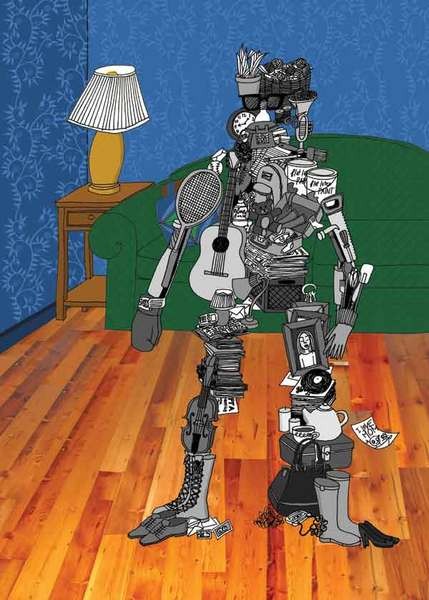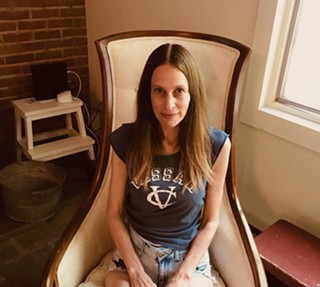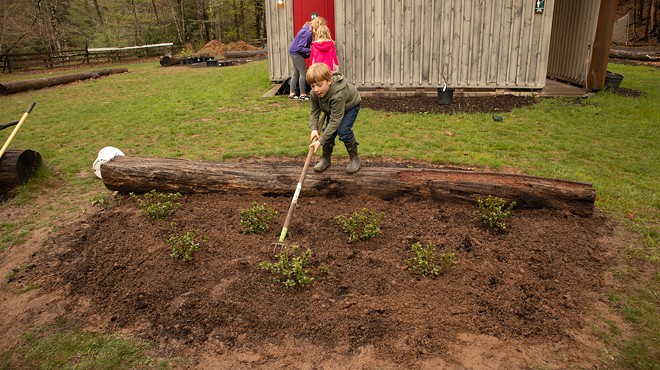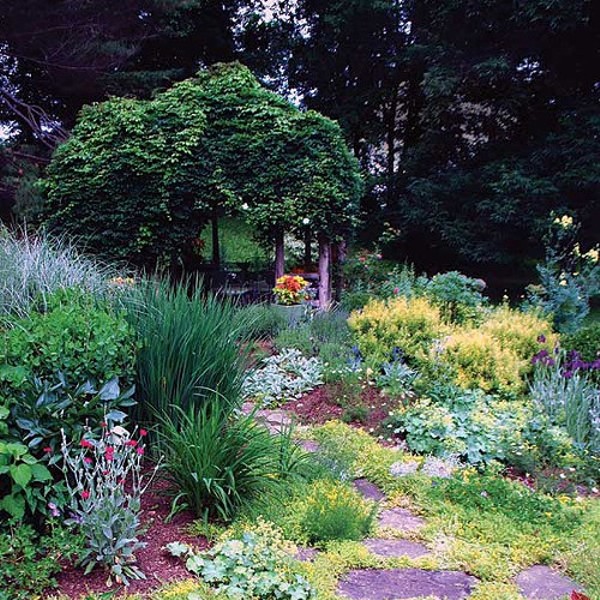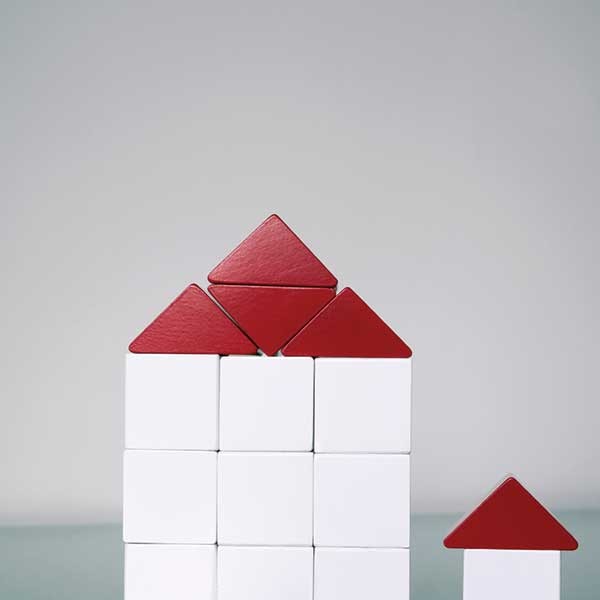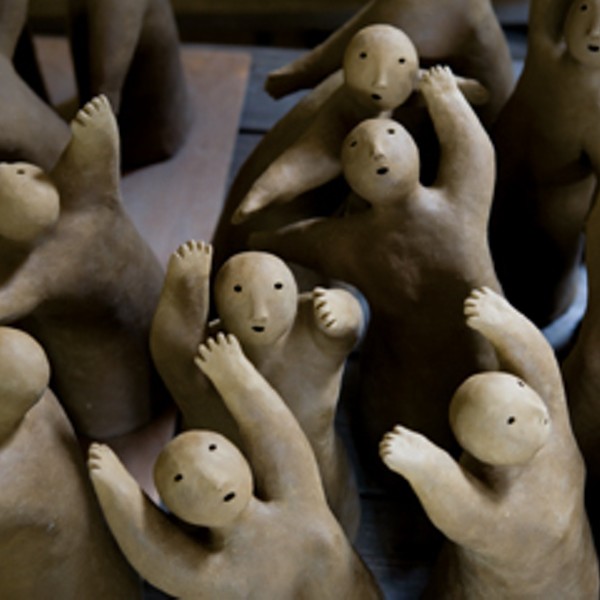No matter how put-together we might appear to be on the outside, most of us have a dirty secret. Sometimes it’s an attic or a basement that’s teeming with artifacts and yellowed papers. Or a closet that must be opened carefully, lest its contents tumble pell-mell onto the floor. Our life detritus can spill out onto other surfaces as well—countertops, coffee tables, bookshelves. Those of us with children at home are doubly doomed, what with brim-filled toy baskets, towering board games, and drawers jammed fast with hard-to-toss artworks by budding Michelangelos.
Collections like these are the inevitable flotsam and jetsam of life in a culture that tells us we are our stuff. “I buy; therefore I am” is the Western way. It’s known in the self-storage industry that the number of sprawling, aluminum-sided storage facilities has doubled in this country each decade since the late 1960s. We have too much stuff. When our stuff is no longer serving us, when it is no longer useful or loved, it becomes clutter. And clutter can easily become unmanageable.
What’s it all about, and what can be done? I huddled with five of the Hudson Valley’s clutter-busting experts for ideas and strategies. According to Sarah Stitham of Olivebridge—Ulster County’s only certified professional organizer and certified organizer coach—excess stuff signals blocked energy. When clutter becomes overwhelming, it’s the sign of a life that’s not running optimally, and of habits that are taking a toll on personal health and well being. “People call me when they’re stuck,” says Stitham. “They want to move forward but they don’t know how. The clutter is a byproduct of that.”
True Abundance
Like most professional organizers, Stitham—who calls her business Revamp®—will help weed out unused clothing and create filing systems for her clients. Yet Stitham has a unique, holistic approach to organizing. She looks at the whole person, honing in on their optimal health and wellness. Seen in this light, out-of-hand clutter is a just a foil; the true problem is a life that has fallen out of balance. As such, the decision to reorganize becomes an exciting opportunity for personal growth. It’s a chance to recreate a life that’s in line with one’s true values, passions, and joys.
This is fertile ground for stories of transformation. When one Revamp client came to Stitham, she was overweight, overworked, eating on the run, and taking too much medication. Her kitchen was cluttered with things like a bread machine that she never used—yet it was devoid of the proper supplies necessary to create a simple, healthy meal. Together Stitham and her client revamped the kitchen and shopped for a top-quality knife, vegetable peeler, and sauté pan. Inspired by her new, spare environment—and equipped with a few recipes from Stitham, who also has a background in cooking—the client started preparing more nutritious meals for herself and eventually lost some weight. “She was thrilled,” says Stitham.
“The hot spots for me are the kitchen and the bedroom. Food and sleep,” notes Stitham. She goes on to tell the story of another client, who wasn’t flourishing five years after a difficult divorce. Like a bloodhound for stuck energy, Stitham went to the bedroom and found what she believed to be the culprit: an old mattress that dated back to the start of the client’s failed marriage. “The mattress was a total disaster,” says Stitham—to say nothing about the ex-husband’s old clothes that were still hanging in her closet. Starting with a new mattress, Stitham helped revamp the bedroom, editing out evidence of the past and choosing a warm, inviting color for the walls. Fast forward to a happier client who was sleeping better and ready to start dating.
“People often have things that are not conducive to wellness and vitality,” says Stitham. “Decluttering becomes about paring down what you don’t need so you can have more abundance in your life.”
Start Small
While other professional organizers might vary in style and approach, most agree that clutter tends to multiply when lives are too harried and overpacked. It can come hand in hand with stress and a lack of self-care and self-nurturing. No matter what path you take, the journey to a clutter-free environment can bring clarity of mind and a sense of satisfaction that comes from completing a long-overdue task.
Margot Molnar, a professional organizer based in Woodstock, belongs to a more traditional school of organizing than Stitham’s. For her, the act of decluttering is not necessarily a chance to reassess one’s life; it’s just a task, pure and simple. Molnar has a grounding presence and seems ready to offer reassurance and soft, steady guidance at a moment’s notice. To would-be declutterers, Molnar advises, “Start with one project, just a small area—maybe one drawer. Don’t think of all the projects that need to be done; that’s too overwhelming. You’ll get reinforced by the good results of finishing that project, and you’ll find the motivation to keep going.”
For Sue Story, who runs her Clutter Busters business out of West Shokan, it’s about behavior modification and the creation of new habits. She zeroes in on two simple tasks that have instant-gratification results. “I tell my clients to open their mail immediately so that it doesn’t pile up,” says Story. “And when something falls, pick it up right away.” Story comes across as a strong, take-charge person determined impart that strength to her clients. “I don’t want to enable anyone; I want to empower them,” says Story. “That way they won’t need me to come back.”
Story agrees with Stitham that clutter is stuck energy—and she also believes that a deep-rooted clutter problem can go hand in hand with low self-esteem. Reorganizing, she believes, can offer powerful medicine to an ailing self-image. Many of Story’s clients have become her friends, and she loves seeing them become more relaxed and happier in their skin after tackling a clutter project. “They feel freer,” says Story.
Be Kind to Yourself
The route to clarity and freedom isn’t without road bumps—but people like
Rosalyn Cherry of New Paltz, the author of be clutter FREE: Sorting Made Simple
A trick of Cherry’s is to encourage her clients to take photographs of things that have sentimental value—and then give the items away. One client had a trunk filled with all the sweaters and scarves that her grandmother and aunt had ever knitted for her. Woven with memories, the clothes no longer fit yet the client had kept them for years. It was time to let go. Cherry advised her to choose one or two items to keep (“I believe that everyone should have a treasure chest,” says Cherry); the client took pictures of the rest before giving them to charity.
It’s also easier to let things go when you know where they’re going—whether it’s to the recycling center or a thrift shop. Giving without strings is a happiness booster like no other. “My big thing is shelters for battered women, who have to start a brand-new home because they left where they were living,” says Cherry. “You can’t imagine the joy it brings people to have the things that you don’t use.”
Help for Hoarders
Sometimes letting go is not just hard; it’s impossible. In cases like this clutter is not just an annoyance; it’s paralyzing. The A&E network television show “Hoarders” has brought new awareness—and a lot of gawking voyeurism—to the psychological problem known as compulsive hoarding. Episodes follow the stories of troubled hoarders who obsessively save everything that comes into their homes, even garbage. In classic, sensationalist reality-show style, experts and therapists arrive on the scene, often in gas masks, ostensibly to offer quick, life-changing help.
Some two million people in the United States suffer from this pathological disorder, which is very difficult to treat. As nearly every episode of “Hoarders” makes plain, however, the hoarder will not accept help unless he or she is ready and willing to change. Sometimes it takes a crisis—a threat of divorce, eviction, or even death—to bring about such transformation.
According to Sheila Delson—a Poughkeepsie-based professional organizer with a special focus on chronic disorganization—there is only one effective treatment for hoarding: steady, consistent intervention with long-term cognitive behavioral therapy. Delson, who is in the early stages of putting together a task force for this problem in the Hudson Valley, has strong views about the A&E show. “It’s exploitation,” she says. “The people on these shows are never prepared for the emotional wreckage they’re about to encounter with the cameras, the indifference, the producers who have an agenda to get the job done. They have two days to make a shoot. There’s a disregard to the mental health and stability of the client.”
A myriad of reasons might contribute to a hoarder’s disorder—most of which lie in the psyche of the hoar≠≠der himself. But Delson doesn’t discount the influence of the culture at large. “We all tend to overaccummulate,” she says. “That makes it more difficult for hoarders to compare themselves to cultural norms and to recognize that they have a problem.”
Getting—and Staying—Organized
Social scientists might link our modern urge to acquire with a primitive survival mechanism. With hoarders, this ancient switch seems permanently in the “on” position—though many of us have the same tendencies to a lesser degree, exacerbated by a rabid consumer culture. At the same time, most of us also have a natural human need—a love, perhaps—for order. Can the two tendencies happily coexist?
Sarah Stitham of the Revamp method says it’s key that we start any reorganization project with a vision of a life that makes us feel balanced and truly happy. Perhaps it’s a vision of having less computer time and more meditative experiences, and the project becomes about decluttering a space to unroll a yoga mat or sit on a Zafu cushion. Once we have that vision, whatever it is, we can have real clarity about what can stay in our lives and what ought to go. The trick to staying organized, says Stitham, is to have that reason: a clear trajectory for how to bring more joy, passion, and vitality into your life. When you open up that possibility by physically clearing some space, everything else just naturally falls into place.
Resources
Sarah Stitham, CPO (845) 594-5932; www.sarahstitham.com
Margot Molnar (845) 679-6242
Sue Story / Clutter Busters (845) 657-6644; www.clutterbustersny.com
Rosalyn Cherry (845) 255-1302; www.beclutterfreebook.com
Sheila Delson, CPO-CD (845) 463-4140







